The beginning of the new year is a time to look forward, which made us wonder about the future of nostalgia. The marketing trend of inspiring happiness, comfort and brand preference by conjuring positive memories has become a powerful way to connect and highlight shared values and hope for the future.
Nostalgia has become a growing trend in the world of entertainment, fashion and marketing. Whether it’s a re-boot of your favourite sitcom or movie, a blockbuster series set in the past, retro-inspired hair and make-up styles, or flashback fashions like the Missoni zig-zag print, nostalgia envelops us.
Marketers have long understood that nostalgia sells. But very few of us really understand why. Studies by Psychologist Clay Routledge of North Dakota State University along with his colleagues at University of Southampton show that “remembering past times improves mood, increases self-esteem, strengthens social bonds and imbues life with meaning.” What brand doesn’t want to link with these positive emotions?
To make nostalgia sing, a good strategy needs a twist that is fresh and relevant to avoid feeling “old.” Take our PR firm’s work with Maple Leaf Foods. Our strategy is focused on the nostalgic resurgence of healthy, homecooked meals, but making dinner from scratch demands so many more considerations today. We choose our foods much more carefully than consumers of yesteryear. Making your kitchen the heart of the home for sustainability, brings a new meaningful purpose to the dinner table. Maple Leaf Foods checks all the boxes as a carbon-neutral company with a vision to be the most sustainable protein company on earth. Its commitment to corporate social responsibility and making a difference comes full circle to embrace the delicious home cooking of yesterday, while meeting imperatives for today’s consumers.

While several leading brands have used the emotion associated with nostalgia in their marketing, many people point to “Stranger Things” – the hit Netflix drama series – as a major propellor of the nostalgia trend. Set in the 1980s, the show contains countless nods to the pop culture of the time and has paved the way for songs like Kate Bush’s 1985 hit, “Running up That Hill” to rise in the charts again. As “Stranger Things” turbo-charged the trend, marketers and brands caught on to our fascination with the fun times of the past.
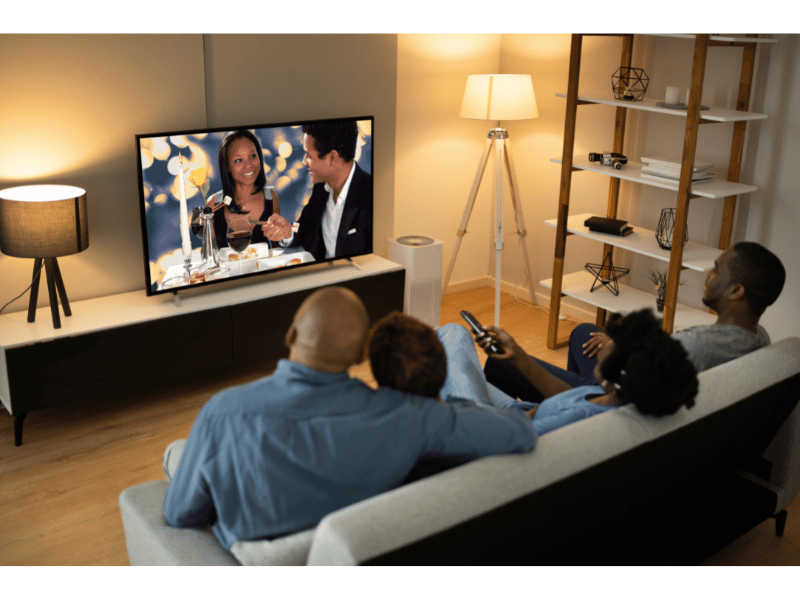
A recent survey of Strategic Objectives’ PR and digital marketing team – comprised mostly of GenX and Millennials, along with a few Gen Zs and Boomers – showed that not one of them felt bored or frustrated by nostalgia. So why are we so enamoured with the past? Gregory Allen, Professor at the Kellogg School of Management speculates: “People become especially nostalgic when they are anxious about the present and, especially, the future. The past is safe because it is completely predictable.”
For many, that the desire for a simpler time specifically relates to a time without social media... before lives were curated to appear seemingly perfect to followers. Our last three years of COVID has also fueled nostalgia. We just want to remember a time when things were good, so we can believe they will be good again. Imagine, we are now nostalgic about life before lockdown – just three years ago!
Whatever the origins, nostalgia makes most of us feel good. Our survey showed that themes of nostalgia make 71% of our staff smile or laugh, and 65% of us say these themes induce feelings of happiness. Nostalgia trends trigger happy memories for 59% of us and promote feelings of “warm and cozy” (47%) and “being comforted” (47%).
What’s more interesting to us as marketers, however, is the fact that almost a third of our team (30%) said that nostalgic trends made them want to buy products they haven’t thought about in a while. And this point is not lost on marketers around the world. Whether it’s entertainment or fast fashion, looking in the rear-view mirror can drive your business forward.
At its best, marketing nostalgia taps into shared experiences that we didn’t realize were so universal. Unlocking these memories helps us feel connected with each other, but also to a marketer’s brand identity. Through common experiences, we feel shared values and the belief that “they really get me.” That creates feelings we want to nurture and brands we want to support.
So, we know looking back is big business, but how do you make nostalgia work for your brand? How can a brand be authentic without retro-washing? Committed to fresh thinking, creativity, and inspired by pop culture and the world around us, the trendspotting team at Strategic Objectives offers Top 5 Tips for thinking ahead to help nostalgia boost your brand.
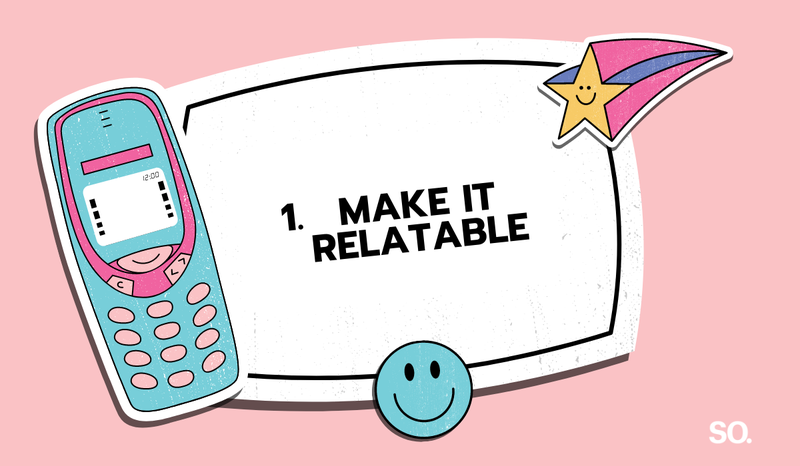
Effective retro campaigns connect with your target audience because they reflect good times and generate good vibes. Nostalgia means different things to different audiences. Our staff overwhelmingly relate to the nostalgia of the 1990s followed closely by the 1980s. And interestingly, even our Boomers remembered these decades with heartfelt memories. Investigate your target audience and ensure that you are finding the pulse that ignites emotion and revitalizes a moment that inspires positivity. From a brand storytelling perspective, the best past is the near-past. In our digital world when a nano second can be measured, a decade is more like a century for today’s consumers. So don’t get locked in the past; link to the future and modern relevance.
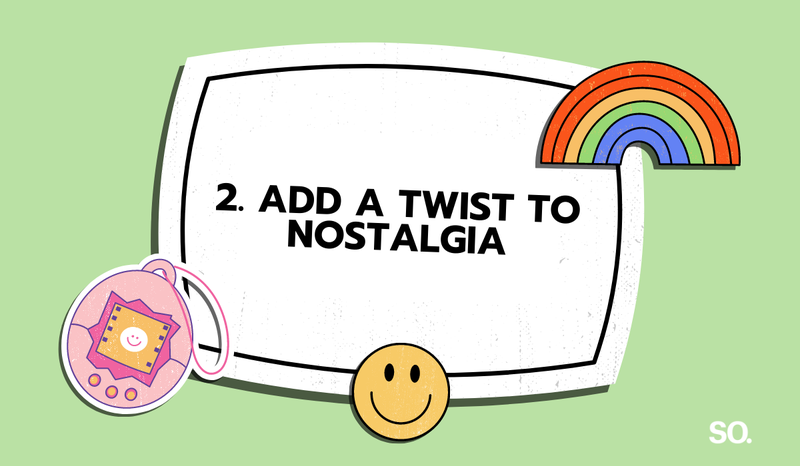
Nostalgia works best when marketers create a nod to the past but update it for today. A great example is the movie “Top Gun Maverick.” The success of the 2022 movie was rooted in the storytelling that touched on the feel-good sentimentality of the original movie with the action of the present. Fans were connected to an updated story for today’s younger generation, many of whom weren’t even born when “Top Gun” was released in 1986.
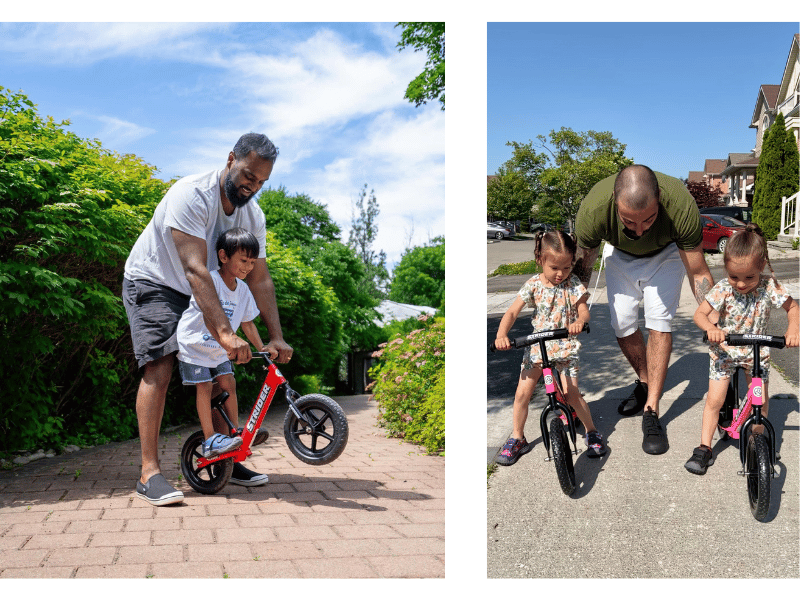
The same principles apply to your brand. The sweet spot is when you can reimagine nostalgic origins while leveraging all the advantages of digital marketing and technology to connect with your brand fans. At Strategic Objectives, we recently brought this concept to life for Keen Shoes. We tapped into the nostalgia of learning to ride a bike with today’s young parents, but we updated this rite of passage and took off the training wheels by focusing on Strider Bikes, the popular, new no-pedal, balance bikes for kids. We targeted Influencers and Digital Contacts and triggered nostalgic memories of scraped knees, and exhausted parents running beside the bike, along with the joyful satisfaction of riding solo. The integrated digital and Influencer marketing program provided the opportunity to showcase the modern-day Keen kids’ shoes designed to handle the extra wear and tear of a Strider bike rider. Nostalgic memories, updated for today’s world.
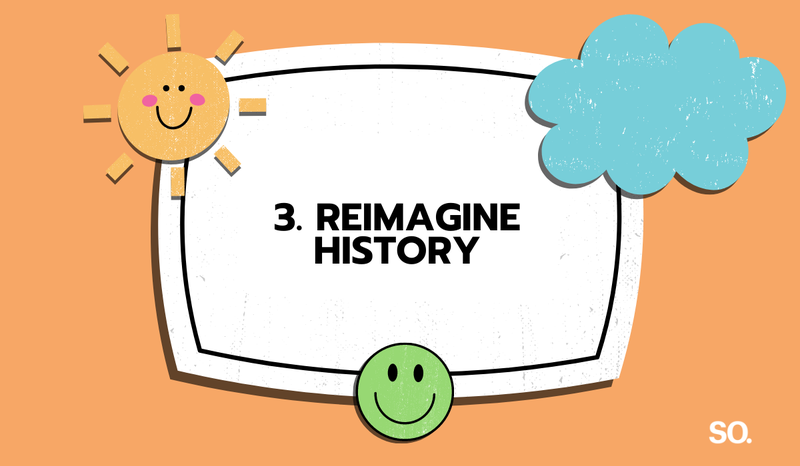
Look for visionaries or favourite celebrities who were ahead of their time or not fully appreciated in their time. While the Spice Girls were founded on the concept of girl power and female empowerment, these themes have only grown in importance since the band’s debut release in 1996. Taking your brand back to find early examples of today’s powerful social themes allows you to be retro, showing that your brand shares its consumers’ passions and heroes, all while being modern and future-forward.
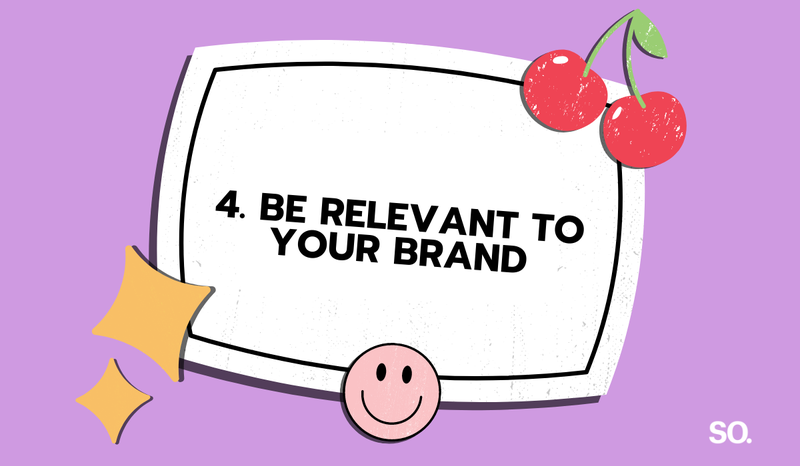
A nostalgic trend needs to be relevant to your brand and your target audience to avoid retro-washing. Authenticity is critical. A recent Strategic Objectives Influencer campaign introduced a modern hack to a holiday tradition. Young parents were encouraged to re-ignite their family-friendly love for making and decorating traditional gingerbread houses by using limited-edition holiday Pop-Tarts. The campaign not only inspired families to rediscover the nostalgic fun of building a holiday house, but also gave all those who grew up with Pop-Tarts as their go-to toaster treats of their youth, a new way to engage with the pastries. By melding nostalgia with digital consumer connections, the brand successfully offered a relevant, time-saving hack to create nostalgic memories, even in today’s super busy world.
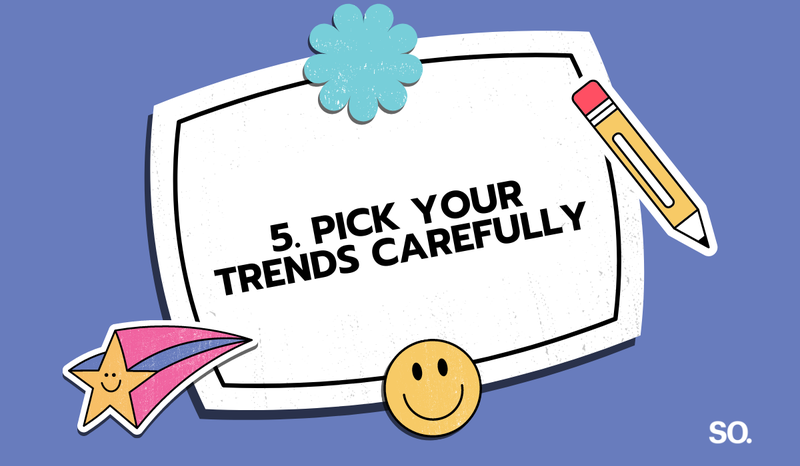
Look at nostalgic trends through today’s lens. Not everything that was once popular is going to be popular again. In fact, our team collectively hope that low-rise jeans, cakey make-up, and frosted tips never return! Before launching any program, do your research. Work with your PR and Marketing partners to ensure that your concept is fresh, new and different. And incorporate creative communications in your PR campaigns to build those powerful consumer bonds that connect with authenticity, meaning and memorability.
So how will the future intersect with nostalgia? If Gen Z is an indication, there is growing enjoyment of a modern connection with the past. For example, the gender fluidity of Harry Styles attracts a lot of attention today, but many of us remember that David Bowie previously walked in those shoes in the 1970s. Good marketing can help highlight those connections that will click with your audience.
Speaking of nostalgia, remember when you could simply call a friend and ask for help and they’d be there for you? At Strategic Objectives we still embody that lovely concept and live it every day. So please, give us a call if you are looking for some bold brand building and PR strategies to propel your future. Our creativity combined with fresh thinking can breathe new life into your brand. To paraphrase the quote often attributed to baseball legend Yogi Berra, “It’s déjà vu all over again” but it’s better!



